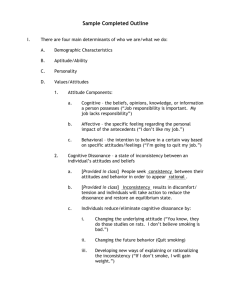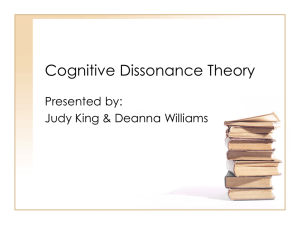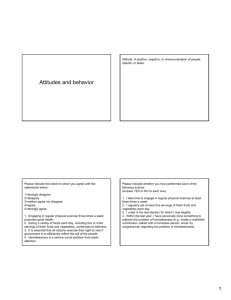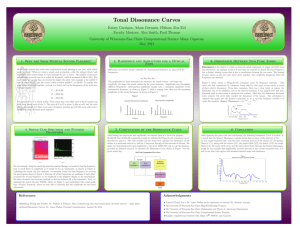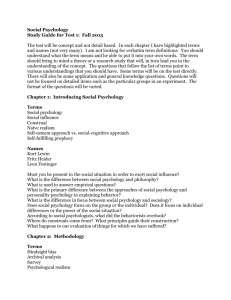CALL FOR PAPERS, Yale: The Aesthetics of Dissonance
advertisement
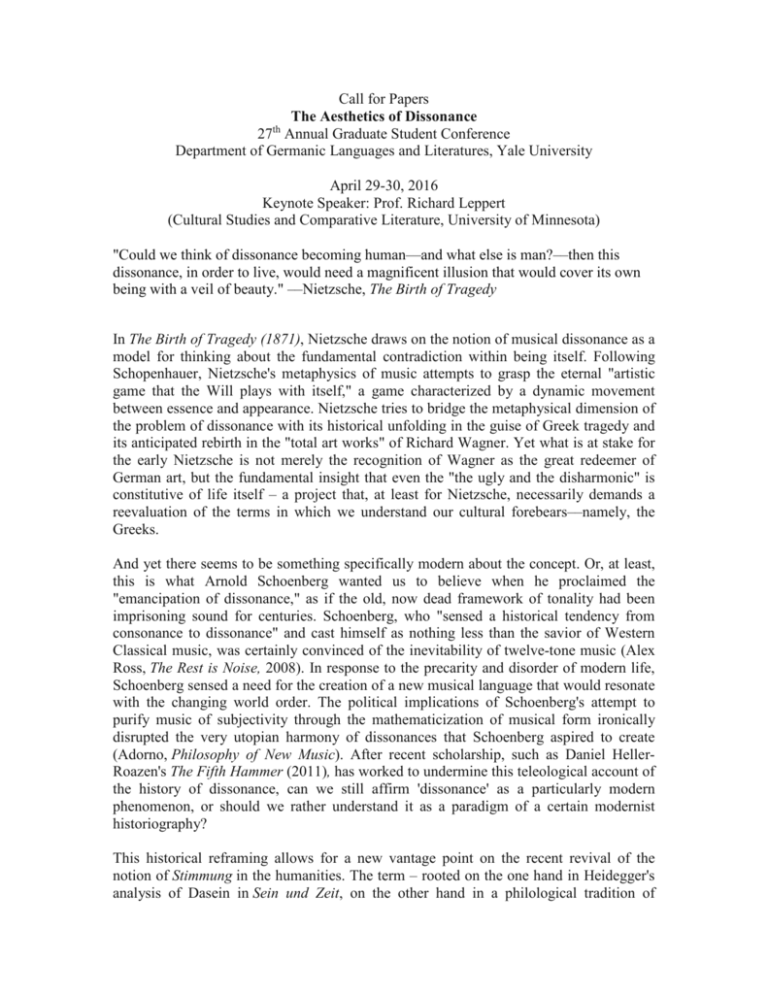
Call for Papers The Aesthetics of Dissonance 27th Annual Graduate Student Conference Department of Germanic Languages and Literatures, Yale University April 29-30, 2016 Keynote Speaker: Prof. Richard Leppert (Cultural Studies and Comparative Literature, University of Minnesota) "Could we think of dissonance becoming human––and what else is man?––then this dissonance, in order to live, would need a magnificent illusion that would cover its own being with a veil of beauty." ––Nietzsche, The Birth of Tragedy In The Birth of Tragedy (1871), Nietzsche draws on the notion of musical dissonance as a model for thinking about the fundamental contradiction within being itself. Following Schopenhauer, Nietzsche's metaphysics of music attempts to grasp the eternal "artistic game that the Will plays with itself," a game characterized by a dynamic movement between essence and appearance. Nietzsche tries to bridge the metaphysical dimension of the problem of dissonance with its historical unfolding in the guise of Greek tragedy and its anticipated rebirth in the "total art works" of Richard Wagner. Yet what is at stake for the early Nietzsche is not merely the recognition of Wagner as the great redeemer of German art, but the fundamental insight that even the "the ugly and the disharmonic" is constitutive of life itself – a project that, at least for Nietzsche, necessarily demands a reevaluation of the terms in which we understand our cultural forebears––namely, the Greeks. And yet there seems to be something specifically modern about the concept. Or, at least, this is what Arnold Schoenberg wanted us to believe when he proclaimed the "emancipation of dissonance," as if the old, now dead framework of tonality had been imprisoning sound for centuries. Schoenberg, who "sensed a historical tendency from consonance to dissonance" and cast himself as nothing less than the savior of Western Classical music, was certainly convinced of the inevitability of twelve-tone music (Alex Ross, The Rest is Noise, 2008). In response to the precarity and disorder of modern life, Schoenberg sensed a need for the creation of a new musical language that would resonate with the changing world order. The political implications of Schoenberg's attempt to purify music of subjectivity through the mathematicization of musical form ironically disrupted the very utopian harmony of dissonances that Schoenberg aspired to create (Adorno, Philosophy of New Music). After recent scholarship, such as Daniel HellerRoazen's The Fifth Hammer (2011), has worked to undermine this teleological account of the history of dissonance, can we still affirm 'dissonance' as a particularly modern phenomenon, or should we rather understand it as a paradigm of a certain modernist historiography? This historical reframing allows for a new vantage point on the recent revival of the notion of Stimmung in the humanities. The term – rooted on the one hand in Heidegger's analysis of Dasein in Sein und Zeit, on the other hand in a philological tradition of immanent critique that attempts to describe a kind of harmonic or affective correspondence between reader and text, of which Emil Staiger's concept of Stimmungslyrik may be the most prominent representative – was widely dismissed in the second half of the twentieth century before its aesthetic potential was reclaimed in recent years (e.g. H.U. Gumbrecht's 2012 Atmosphere, Mood, Stimmung. On a Hidden Potential of Literature). Asking about Stimmung as dissonance means, first of all, to perform an archeology of its metaphorical source, that of musical temperament. Stimmung in the sense of temperament poses the problem of a technique of balancing irreducible differences – be it those between musical intervals, or between a text's constituent elements. Understanding Stimmung therefore as an inherently dissonant conception of artworks prompts us to ask about "textual temperament." This heightened sensitivity to the sonic dimension of texts challenges us to rethink current methods in the humanities. Assuming a dissonant polyphony to be constitutive of an artwork would, instead of trying to restore a harmonic wholeness to our aesthetic perception, assert art's polyvocality, thus framing structural inconsistencies similarly to the intrinsic dissonances at the heart of musical temperament. Our aesthetic experience might consequently be thought of as the projection of consistency not despite but precisely through the balancing of inalienable dissonances. Following the metaphorological cue, one might further ask about the significance of "resolution": does 'dissonance' necessarily aim at its resolution or is it possible to think 'dissonance' without 'harmony' or without 'resolution?' In other words: does our engagement with texts, or other art forms, not already reveal our need to resolve them? We welcome suggestions for papers relating but not limited to the following topics: • theorizations of dissonance in literature and art • German Romanticism • E.T.A. Hoffmann • Friedrich Hölderlin • Adorno's Philosophy of New Music • "attack on the harmonic work" (Adorno) • oral and written forms of dissonance; dissonance and language • writing noise, sound • dissonance and new forms of writing (e.g. montage; ‘phonography,’ e.g. Kittler’s gramophone, Rilke’s “Urgeräusch“) • ‘Stimmung’ and the ‘affective turn’ in the humanities • cognitive dissonance • Emil Staiger's Stimmungslyrik; Alois Riegl's “Mood as the Content of Modern Art” • Heidegger • attunement • dissonance and dialectics • dissonance and the demonic • temporality of dissonance • dissonance and harmony/dissonance and resolution/ John Cage's "anarchic harmony" • historicity of dissonance; dissonance and modernism The deadline for abstract submission is February 15th, 2016. Please send your paper proposals (around 300 words) for a 20-minute presentation to elisa.ronzheimer@yale.edu. Conference organizers: Anna Alber, Elisa Ronzheimer


